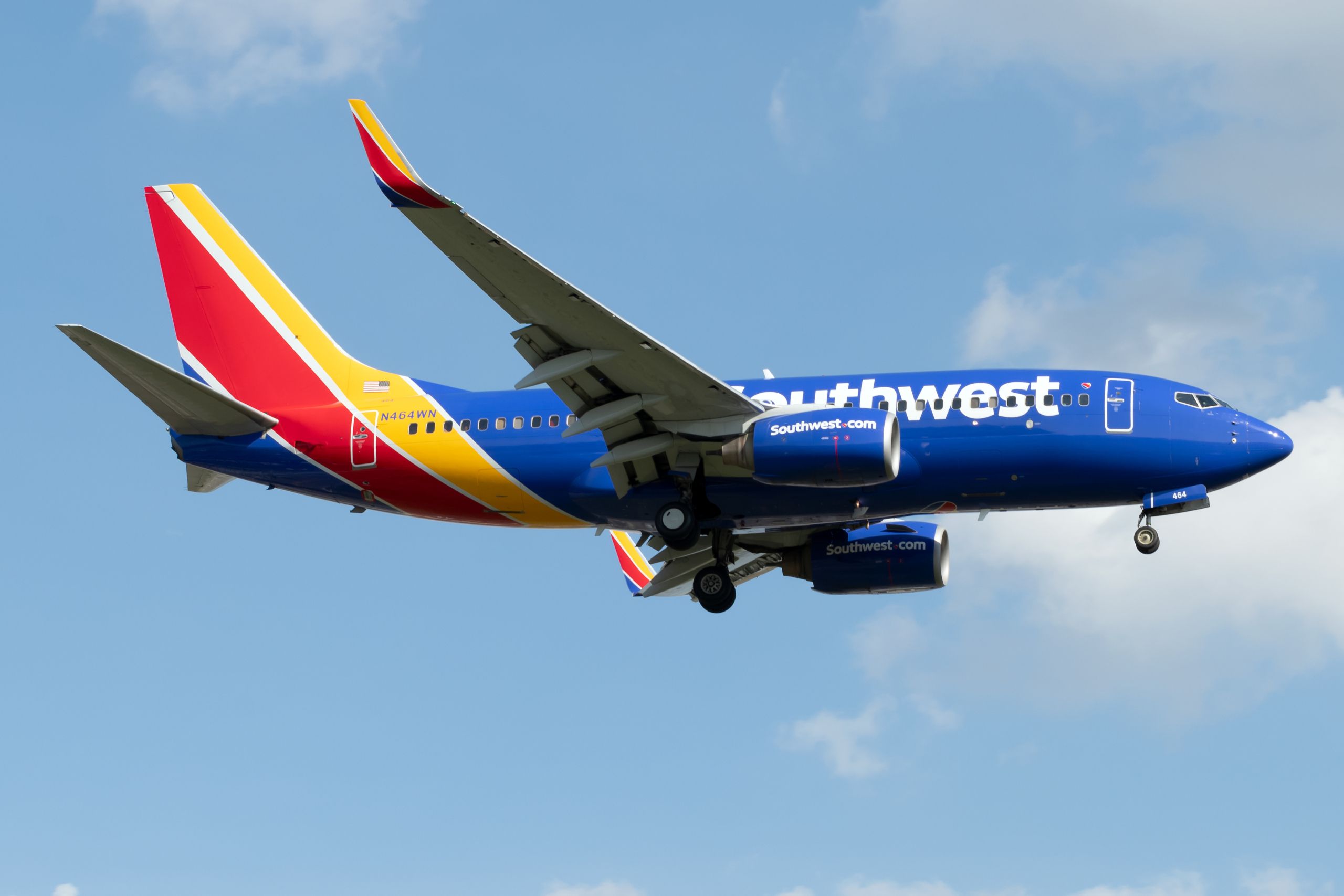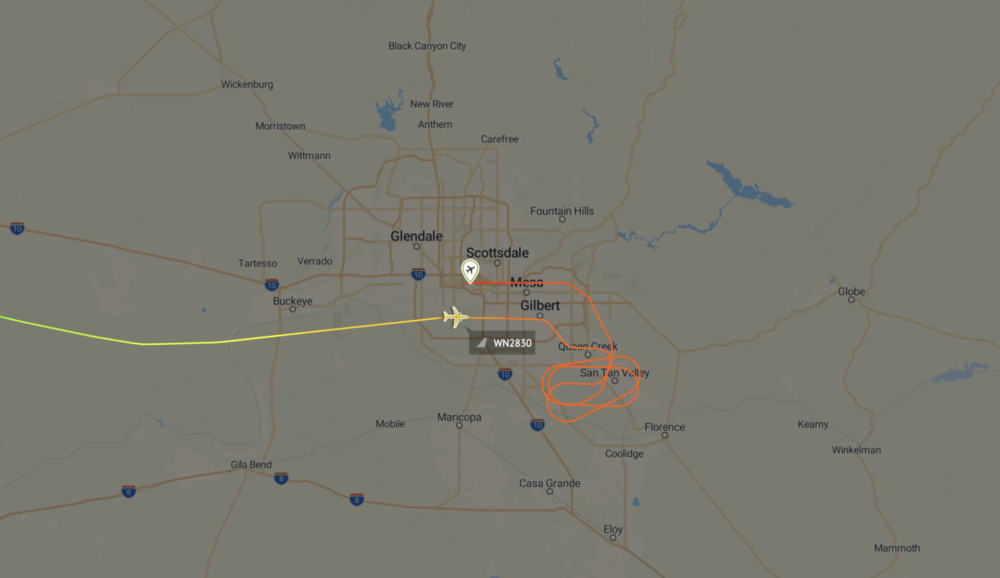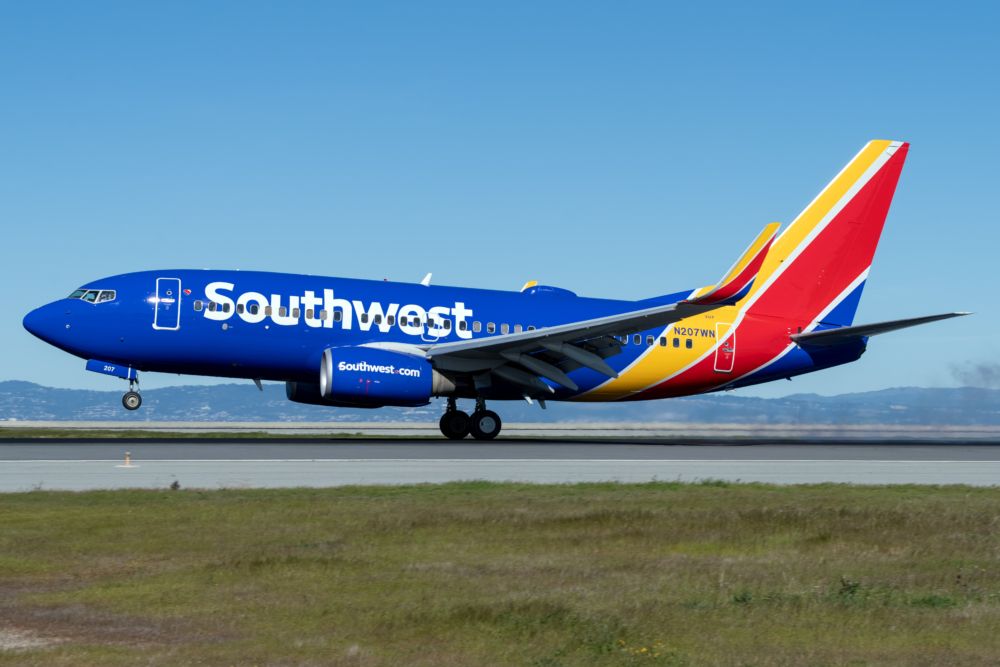A Southwest Airlines flight between Santa Ana and Phoenix ran into a spot of bother on approach to the airport yesterday. Reporting a flight control malfunction, the crew declared an emergency and burned off fuel for around half an hour. The aircraft landed safely with no injuries to passengers or crew.
A bad day for this 737-700
Some days things just seem to go from bad to worse. For Southwest Airlines, its Boeing 737-700 registered N254WN was not having a good September 27th. The day had started OK, with an on-time early morning departure from San Antonio to Denver, followed by another prompt departure from Denver to Santa Barbara. In fact, N245WN landed around 30 minutes ahead of schedule into Santa Barbara.
That’s when things started to go downhill. For unknown reasons, the aircraft was delayed by around an hour and 20 minutes at Santa Barbara, causing it to arrive an hour late into Oakland. Its departure from Oakland set off an hour and 40 minutes behind schedule, arriving an hour and 20 minutes late to Santa Ana.
Likely hoping to make up some time on the final leg, the crew managed to push back just an hour and a half late. They made good time and were approaching Phoenix less than an hour later. That’s when things really started to go pear-shaped.
The aircraft had 144 people on board and was descending towards Phoenix and holding at around 6,000 feet when the crew encountered an issue. According to reporting in The Aviation Herald, the crew declared an emergency, citing a flight control malfunction. The crew advised that they needed to burn off fuel before landing, and proceeded to hold to the south of the airport.
The aircraft held for approximately 35 minutes before approaching the airport. It landed safely on Runway 26 at 19:32 local time, an hour and 32 minutes after departing.
Why did it need to burn fuel?
Burning off fuel is a common practice in situations where an aircraft has to divert or return to its point of origin due to an emergency. If it was fueled up for a long flight, landing so soon into the journey would cause it to be overweight. But this 737 was already at its intended destination, so why did it hold to burn fuel?
Although the incident reports don’t specify what the issue was with the flight controls, it’s highly likely this was a problem with the flaps. Extending the flaps reduces the stall speed of an aircraft, and produces more induced drag. This means it can land slower and also fly a steeper descent angle to the runway.
Any number of mechanical or electrical faults can cause the flaps to fail. While it’s not considered dangerous, it is unusual, and warrants being treated as an emergency. The main issue is that the aircraft will be landing at a much higher speed, therefore will require more runway to stop.
Additional weight will compound this fact, so it makes sense to land the aircraft as light as possible in order to reduce the amount of landing roll required. The indicated airspeed of 200 knots and landing suggests this was indeed the case. While no flap landings require some degree of recalculation, this is exactly the sort of scenario pilots train for, and was handled perfectly by the Southwest Airlines crew.



